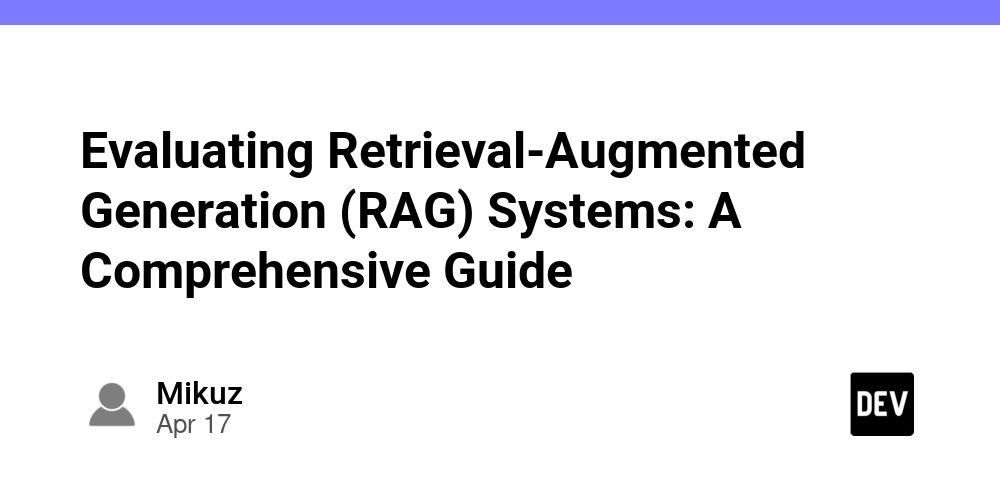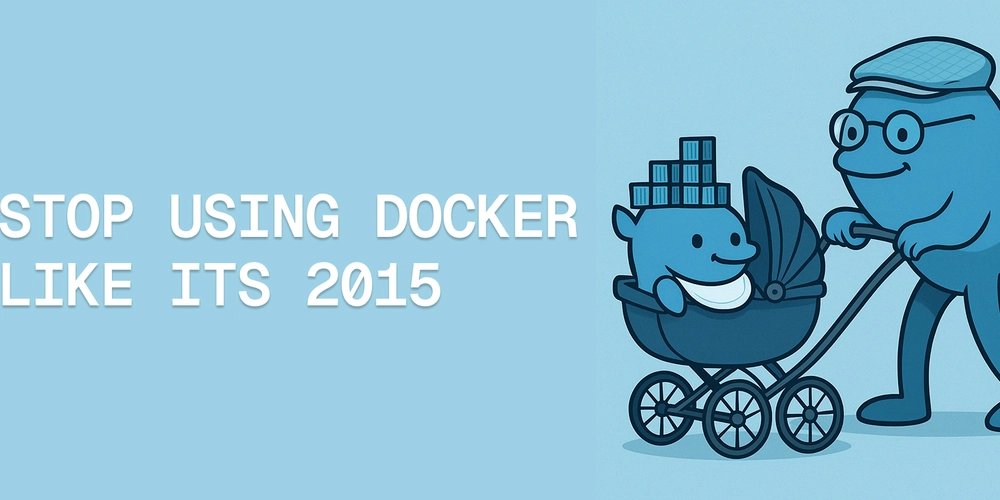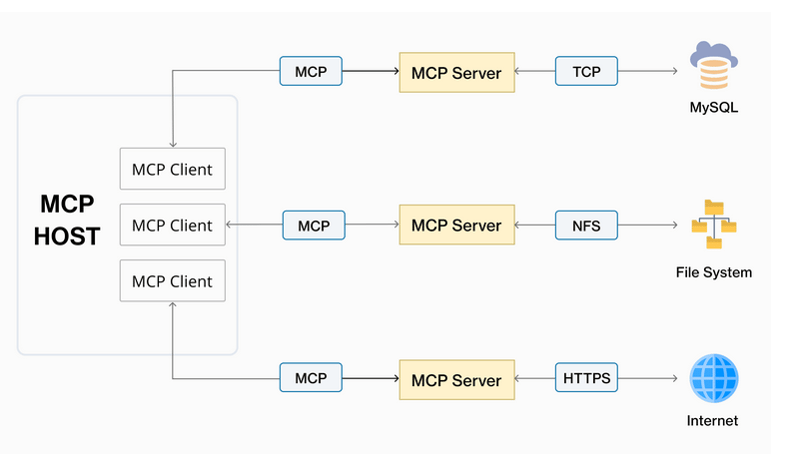Evaluating Retrieval-Augmented Generation (RAG) Systems: A Comprehensive Guide
As Large Language Models (LLMs) become more prevalent in enterprise environments, organizations are increasingly implementing retrieval-augmented generation (RAG) systems to leverage their own data. While RAG systems effectively bridge the gap between LLMs and organizational knowledge bases, their performance can be inconsistent across different applications. Understanding and implementing RAG evaluation metrics is crucial for measuring system effectiveness and ensuring optimal performance. This comprehensive guide explores the essential metrics used to evaluate RAG systems, implementation strategies, and production-ready best practices that organizations need to consider when deploying these solutions. Understanding RAG Systems and Their Components Retrieval-augmented generation represents a significant advancement in how organizations utilize LLMs with their proprietary data. This architectural approach enables companies to harness an LLM's language processing capabilities while maintaining control over the factual information used in responses. Core Components of RAG Architecture Vector Database At the foundation of every RAG system lies a vector database that stores an organization's knowledge base. This database contains text converted into numerical representations (embeddings) through specialized models. These embeddings serve as the system's information retrieval mechanism, allowing for efficient semantic searching. Prompt Engineering Layer The system includes carefully crafted prompts that bridge the gap between retrieved facts and LLM instructions. These prompts orchestrate how the system combines contextual information with user queries to generate appropriate responses. Language Model Interface The final component is the LLM itself, which processes the combined prompt and retrieved context to generate relevant responses. This layer handles the natural language generation aspects of the system. Operational Workflow The RAG process follows a two-stage approach: The system converts incoming user questions into embeddings and performs a similarity search against the vector database. This search identifies and retrieves the most relevant contextual information. The system combines this context with the original query and predetermined prompts, forwarding the package to the LLM for final response generation. Common Failure Points RAG systems can fail at either the retrieval or generation stage: Retrieval failures occur when the system pulls irrelevant or insufficient context from the vector database. Generation failures happen when the LLM misinterprets the context or generates inaccurate responses despite having correct context. Understanding these failure points is crucial for implementing effective evaluation metrics and optimization strategies. Challenges and Methods in RAG Evaluation Key Evaluation Hurdles Traditional evaluation methods fall short when assessing RAG systems due to the sophisticated nature of language model outputs. The primary challenge stems from LLMs' ability to express the same information in countless valid ways, making it impossible to create comprehensive reference datasets that capture all acceptable variations. Additionally, LLMs exhibit output variability, producing different phrasings even when given identical inputs and context. Evolution of Evaluation Approaches Statistical Evaluation Methods Earlier approaches relied on statistical metrics that performed direct text comparisons between expected and actual outputs. These methods, while structured, failed to capture the nuanced nature of language model responses. They focused on word-matching rather than semantic understanding, limiting their effectiveness in modern applications. Embedding-Based Analysis Modern evaluation techniques utilize embedding comparisons, converting both generated and reference texts into numerical vectors. This approach better captures semantic similarities, allowing for more meaningful comparisons that account for different ways of expressing the same information. Distance metrics like cosine similarity provide quantitative measures of response accuracy. LLM-Based Evaluation The latest advancement in RAG evaluation involves using LLMs themselves as evaluation tools. This approach leverages specialized prompts and evaluation-specific models to assess response quality. Purpose-built evaluation models like Lynx and Glider offer enhanced capabilities in detecting content hallucinations and measuring context relevance. Evaluation Frameworks The G Eval framework represents a significant milestone in RAG evaluation, introducing chain-of-thought prompting for detailed assessment. This methodology enables more sophisticated evaluation processes that consider multiple aspects of response quality, including factual accuracy, r

As Large Language Models (LLMs) become more prevalent in enterprise environments, organizations are increasingly implementing retrieval-augmented generation (RAG) systems to leverage their own data. While RAG systems effectively bridge the gap between LLMs and organizational knowledge bases, their performance can be inconsistent across different applications. Understanding and implementing RAG evaluation metrics is crucial for measuring system effectiveness and ensuring optimal performance. This comprehensive guide explores the essential metrics used to evaluate RAG systems, implementation strategies, and production-ready best practices that organizations need to consider when deploying these solutions.
Understanding RAG Systems and Their Components
Retrieval-augmented generation represents a significant advancement in how organizations utilize LLMs with their proprietary data. This architectural approach enables companies to harness an LLM's language processing capabilities while maintaining control over the factual information used in responses.
Core Components of RAG Architecture
Vector Database
At the foundation of every RAG system lies a vector database that stores an organization's knowledge base. This database contains text converted into numerical representations (embeddings) through specialized models. These embeddings serve as the system's information retrieval mechanism, allowing for efficient semantic searching.
Prompt Engineering Layer
The system includes carefully crafted prompts that bridge the gap between retrieved facts and LLM instructions. These prompts orchestrate how the system combines contextual information with user queries to generate appropriate responses.
Language Model Interface
The final component is the LLM itself, which processes the combined prompt and retrieved context to generate relevant responses. This layer handles the natural language generation aspects of the system.
Operational Workflow
The RAG process follows a two-stage approach:
- The system converts incoming user questions into embeddings and performs a similarity search against the vector database. This search identifies and retrieves the most relevant contextual information.
- The system combines this context with the original query and predetermined prompts, forwarding the package to the LLM for final response generation.
Common Failure Points
RAG systems can fail at either the retrieval or generation stage:
- Retrieval failures occur when the system pulls irrelevant or insufficient context from the vector database.
- Generation failures happen when the LLM misinterprets the context or generates inaccurate responses despite having correct context.
Understanding these failure points is crucial for implementing effective evaluation metrics and optimization strategies.
Challenges and Methods in RAG Evaluation
Key Evaluation Hurdles
Traditional evaluation methods fall short when assessing RAG systems due to the sophisticated nature of language model outputs. The primary challenge stems from LLMs' ability to express the same information in countless valid ways, making it impossible to create comprehensive reference datasets that capture all acceptable variations. Additionally, LLMs exhibit output variability, producing different phrasings even when given identical inputs and context.
Evolution of Evaluation Approaches
Statistical Evaluation Methods
Earlier approaches relied on statistical metrics that performed direct text comparisons between expected and actual outputs. These methods, while structured, failed to capture the nuanced nature of language model responses. They focused on word-matching rather than semantic understanding, limiting their effectiveness in modern applications.
Embedding-Based Analysis
Modern evaluation techniques utilize embedding comparisons, converting both generated and reference texts into numerical vectors. This approach better captures semantic similarities, allowing for more meaningful comparisons that account for different ways of expressing the same information. Distance metrics like cosine similarity provide quantitative measures of response accuracy.
LLM-Based Evaluation
The latest advancement in RAG evaluation involves using LLMs themselves as evaluation tools. This approach leverages specialized prompts and evaluation-specific models to assess response quality. Purpose-built evaluation models like Lynx and Glider offer enhanced capabilities in detecting content hallucinations and measuring context relevance.
Evaluation Frameworks
The G Eval framework represents a significant milestone in RAG evaluation, introducing chain-of-thought prompting for detailed assessment. This methodology enables more sophisticated evaluation processes that consider multiple aspects of response quality, including factual accuracy, relevance, and coherence.
Organizations can implement these frameworks to establish consistent evaluation standards across their RAG applications.
Core Metrics for RAG System Evaluation
Retrieval Quality Metrics
Context Relevance
Assesses how well the retrieved information aligns with the user's query. High relevance indicates successful identification of pertinent documents, while low relevance suggests retrieval optimization is needed.Context Sufficiency
Evaluates whether the retrieved context contains enough information to formulate a complete and accurate response. Even relevant context can be insufficient if it lacks necessary details.
Response Generation Metrics
Answer Relevance
Measures how well the generated response addresses the original query without introducing unrelated information or tangents.Answer Correctness
Verifies the factual accuracy of the generated response against the provided context. It ensures the LLM accurately interprets and utilizes the retrieved information.Hallucination Detection
Identifies instances where the LLM generates information not supported by the retrieved context. Monitoring hallucinations is crucial for system reliability and trust.
Best Practices for Metric Implementation
Organizations should:
- Establish baseline performance thresholds for each metric.
- Implement continuous monitoring systems to detect performance degradation and optimization opportunities.
- Regularly evaluate and update these metrics to align with evolving business needs.
- Balance metric selection according to specific use case requirements.
Conclusion
Effective evaluation of RAG systems requires a comprehensive understanding of both retrieval and generation components. Organizations must implement robust measurement frameworks that combine context quality assessment with response accuracy metrics.
The evolution from simple statistical comparisons to sophisticated embedding-based and LLM-driven evaluation methods has provided better tools for measuring RAG system performance.
Success in RAG implementation depends on:
- Continuous monitoring and optimization,
- Establishing clear baseline metrics,
- Maintaining rigorous testing protocols.
Key considerations include:
- Context relevance and sufficiency for retrieval,
- Answer relevance, correctness, and hallucination detection for generation.
As RAG systems become more integral to enterprise operations, the importance of reliable evaluation metrics cannot be overstated. Organizations must stay current with emerging frameworks and tools while adapting their assessment strategies to specific use cases.
By maintaining a balanced and proactive approach, organizations can ensure their RAG systems deliver consistent, accurate, and trustworthy results aligned with business objectives.




























![[Webinar] AI Is Already Inside Your SaaS Stack — Learn How to Prevent the Next Silent Breach](https://blogger.googleusercontent.com/img/b/R29vZ2xl/AVvXsEiOWn65wd33dg2uO99NrtKbpYLfcepwOLidQDMls0HXKlA91k6HURluRA4WXgJRAZldEe1VReMQZyyYt1PgnoAn5JPpILsWlXIzmrBSs_TBoyPwO7hZrWouBg2-O3mdeoeSGY-l9_bsZB7vbpKjTSvG93zNytjxgTaMPqo9iq9Z5pGa05CJOs9uXpwHFT4/s1600/ai-cyber.jpg?#)














































































































































![[The AI Show Episode 144]: ChatGPT’s New Memory, Shopify CEO’s Leaked “AI First” Memo, Google Cloud Next Releases, o3 and o4-mini Coming Soon & Llama 4’s Rocky Launch](https://www.marketingaiinstitute.com/hubfs/ep%20144%20cover.png)




































































































































































































![Rogue Company Elite tier list of best characters [April 2025]](https://media.pocketgamer.com/artwork/na-33136-1657102075/rogue-company-ios-android-tier-cover.jpg?#)








































































_Andreas_Prott_Alamy.jpg?width=1280&auto=webp&quality=80&disable=upscale#)




























































































![What’s new in Android’s April 2025 Google System Updates [U: 4/18]](https://i0.wp.com/9to5google.com/wp-content/uploads/sites/4/2025/01/google-play-services-3.jpg?resize=1200%2C628&quality=82&strip=all&ssl=1)










![Apple Watch Series 10 Back On Sale for $299! [Lowest Price Ever]](https://www.iclarified.com/images/news/96657/96657/96657-640.jpg)
![EU Postpones Apple App Store Fines Amid Tariff Negotiations [Report]](https://www.iclarified.com/images/news/97068/97068/97068-640.jpg)
![Apple Slips to Fifth in China's Smartphone Market with 9% Decline [Report]](https://www.iclarified.com/images/news/97065/97065/97065-640.jpg)



































































































































